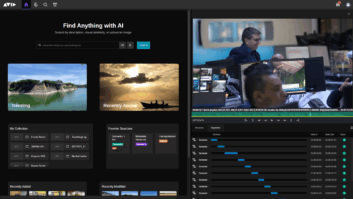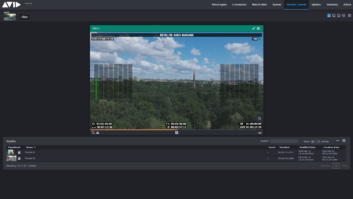The newly launched Avid Interplay fuses integrated asset management, workflow automation and security control into a single, open system, and Avid is already claiming that it will deliver unprecedented productivity gains for media production teams.
According to the company, the Avid Interplay system connects teams to a shared-data and media backbone and manages the flow of projects from inception to completion using security and powerful revision control. The system offers a broad range of tools for searching, archiving, viewing, logging, automatic transcoding, dual resolution encoding and intelligent tracking of multi-resolution proxy files, all of which has the potential to streamline collaboration between people and eliminate time-consuming production tasks. In addition, the system is open to any media production environment – accommodating more than 100 different media and non-media file types – and can link to production tools from virtually any other company.
“The single, most significant challenge in media production today is that very few people work alone – but despite that fact, very few vendors make it easy to collaborate,” said Chas Smith, vice president and general manager for Avid’s video division. “As we’ve worked with customers to identify the roadblocks in media production, they’ve told us that they need greater help finding and storing files, tracking revisions and progress, and managing signoffs and approvals. Avid Interplay addresses these and other workflow challenges by providing open access to – and interoperability between – all shared assets, tasks and connected systems in a secure environment. Everyone with production responsibilities can use Avid Interplay – including producers, graphic artists, assistant editors, IT administrators, writers and storyboard artists, video and audio editors, directors, archivists, and even legal and finance departments. No other combination of workflow products on the market can help move projects from preproduction to final delivery and archive with greater efficiency than Avid Interplay.”
The core Avid Interplay system is a client-server engine that works with any member of the Avid Unity MediaNetwork family of shared-storage systems to form the backbone of a completely interoperable media production environment. It integrates with a host of other Avid apps and offers a business-wide workflow that tracks all Avid projects as well as those aforementioned 100 media and non-media file types, which include multi-resolution video, Microsoft Office documents, Adobe Photoshop and AfterEffects layered files, MPEGs, TIFs, spreadsheets and more.
This is all made possible via the Interplay Engine, a PC server that connects to an Avid Unity media network to act as a central nervous system, providing powerful and secure data-driven access to active and archived media assets. Interplay Access, meanwhile, is the user software client for the Interplay Engine, bringing powerful search, check-out/check-in, revision control and management capabilities to ordinary desktops and laptops on the network. Customers can augment these out-of-the box components of the Avid Interplay system with a range of optional toolsets for deploying a more comprehensive workflow that delivers “unprecedented” productivity gains. As bandwidth demands grow, customers can add Avid Unity capacity to increase data throughput of the entire system.
Brendan Mallon, technology manager for BBC Scotland, which is participating in the beta program for Avid Interplay, said: “In recent years, we’ve witnessed a massive increase in the volume and type of digital assets in production. With media coming in from a wider variety of sources than ever before, and multiple teams contributing to the process, we are constantly striving to work more efficiently. Avid Interplay should allow us to link the entire production process to a central engine, making our teams more productive. More importantly, the architecture is designed to support the range of systems and applications we need to run an efficient business.”






